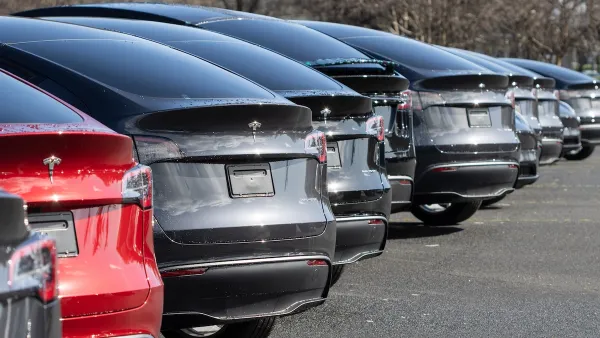An overreliance on ‘partial automation’ can make drivers less attentive.

After testing 14 versions of ‘partial automation’ features in vehicles, the Insurance Institute for Highway Safety (IIHS) concluded that “There’s no evidence that (partial automation) makes driving safer, and, in fact, it can create new risks by making it easier for the driver’s attention to wander.”
According to a piece by Ben Abramson on Strong Towns, “Basic performance testing included seeing how the systems function in prescribed conditions at maintaining speed, distance, and lane control. Most of the systems worked as designed during these sessions, conducted in clear weather and favorable light conditions.”
However, in testing systems that are designed to monitor whether drivers are in control and paying attention, “A look at the IIHS Report Card shows a slew of bad marks in categories such as Attention Reminders and Emergency Procedures, with the report concluding that ‘most of the systems fail multiple safety feature requirements.’”
These systems, while not billed as ‘self-driving,’ use similar technology as autopilot systems. “Seeing how these systems can fail even in controlled testing conditions shows how challenging it is to deploy them safely in more complex urban environments,” Abramson writes.
According to author Peter Norton, self-driving cars perpetuate a historical pattern. “Seeing how these systems can fail even in controlled testing conditions shows how challenging it is to deploy them safely in more complex urban environments.”
FULL STORY: Too Much Trust in Technology Is Dangerous for Drivers (and Everyone Around Them)

Planetizen Federal Action Tracker
A weekly monitor of how Trump’s orders and actions are impacting planners and planning in America.

Maui's Vacation Rental Debate Turns Ugly
Verbal attacks, misinformation campaigns and fistfights plague a high-stakes debate to convert thousands of vacation rentals into long-term housing.

San Francisco Suspends Traffic Calming Amidst Record Deaths
Citing “a challenging fiscal landscape,” the city will cease the program on the heels of 42 traffic deaths, including 24 pedestrians.

Amtrak Rolls Out New Orleans to Alabama “Mardi Gras” Train
The new service will operate morning and evening departures between Mobile and New Orleans.

The Subversive Car-Free Guide to Trump's Great American Road Trip
Car-free ways to access Chicagoland’s best tourist attractions.

San Antonio and Austin are Fusing Into one Massive Megaregion
The region spanning the two central Texas cities is growing fast, posing challenges for local infrastructure and water supplies.
Urban Design for Planners 1: Software Tools
This six-course series explores essential urban design concepts using open source software and equips planners with the tools they need to participate fully in the urban design process.
Planning for Universal Design
Learn the tools for implementing Universal Design in planning regulations.
Heyer Gruel & Associates PA
JM Goldson LLC
Custer County Colorado
City of Camden Redevelopment Agency
City of Astoria
Transportation Research & Education Center (TREC) at Portland State University
Jefferson Parish Government
Camden Redevelopment Agency
City of Claremont





























